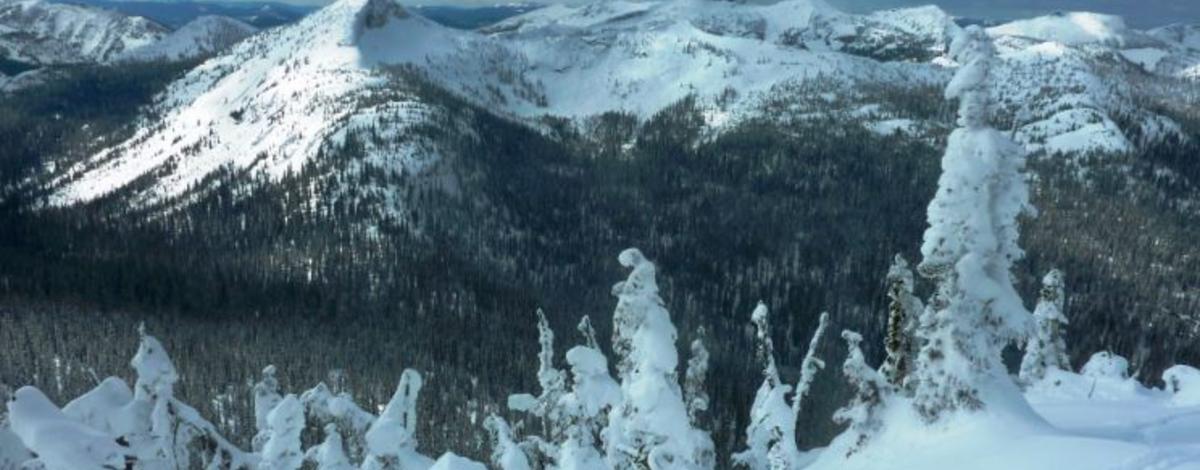Getting 364 bait stations up to meet the deliverables of our Competitive State Wildlife Grant is a pretty fun logistical challenge. Earlier this week Scott Rulander and I took on Cell 137 and were able to put a station up at a spot we'd been trying to figure out how to reach since last winter.
View from bait station 137.

As with most bait station field days we rose before the sun for a early morning snowmobile ride up Ball Creek.
After getting off the snowmobile we put on our skis and start skinning up to a ridge.
When we get to the ridge we are rewarded with a view of remote upper Long Canyon - a sight not often seen in the winter!
Our protocol requires we establish at least one forest carnivore 'bait station' in each of our higher elevation 5x5 km survey cells. These bait stations gather images and DNA from 3 Species of Greatest Conservation Need (fisher, lynx, wolverine) which are listed as 'lacking essential information' in Idaho and Washington's State Wildlife Action Plans. We don't want to put a bait station up just anywhere in the cell though - we want to pick a spot likely to be visited by one of these far ranging mammals. This means placing stations along snowmobile routes, in drainage bottoms, along ridgelines, or on low mountain passes. We were interested in getting the Cell 137 station up at the pass between Long Canyon and Lion Creek because it's one of the few places along the rugged Selkirk Crest where animals can move easily through a treed pass between the east and west side of the range. Not only that, but two other major drainages (Smith and Ball Creek) meet up near this pass as well - increasing the chance one of our target species may pass by. Scott and I had come up with a variety of plans to reach this pass - all which would have been pretty epic days or overnighters - until we finally poured over the maps long enough to figure out this moderate route. We snowmobiled 10 miles up Ball Creek. Then (following the red line on the map) we skiied up Finn Creek to a ridge and then down to the bait station site. Once we were off the sleds this was a 4 mile, 3,000 foot vertical day.
Our goal wasn't the Long Canyon Pass which is named on the map. This is a high elevation pass where it's possible we could detect a wolverine, but much more likely we'd detect a deep snow-pack loving marten. Or goal was the un-named low elevation pass which, as you can see from the picture, would be a much easier travel route for animals which usually choose the path of least resistance.
When we got to the ridge we were tempted to drop into a steep north facing slope. But we felt the snowpack was a little too unstable to take that risk, so we traversed this ridge until we found a nice low-angle treed slope to ski down to our goal.
The slope we chose turned out to be great skiing with no avalanche danger.
Once we made it down to the pass we knew we had picked a good spot. This nice flat treed area had a great 'feel' to it for wildlife...
...so we found a couple trees that would work and set up our station.
We climbed the 1,000 vertical feet back to the ridge and were rewarded by a moment in the sun - a rare winter treat in north Idaho!
We had a great view of Smith Peak from the ridge...and dreamed of ski days to come!
Our work was done and we dropped the south slope back to the snowmobiles.
April 23, 2013:
Scott and I returned to the station to take it down and see what was out there. As always...we hoped for a rare detection of a Species of Greatest Conservation Need (fisher, lynx, or wolverine). But as usual...we detected a marten:


C'est la vie!

